Last updated June 5, 2023
The Imperial Castle of Nuremberg is not just one structure but actually a group of medieval fortified buildings. The buildings are upon a ridge dominating the historical center in the city of Nuremberg in Bavaria, Germany. Nuremberg Castle is an imposing and symbolic structure that is similar to Castle Rock in Edinburgh but even more prestigious (if that can be believed) since it has long been connected to royalty and emperors. The castle’s history is vast and formidable, much like its medieval fortifications spanning back to the middle ages.
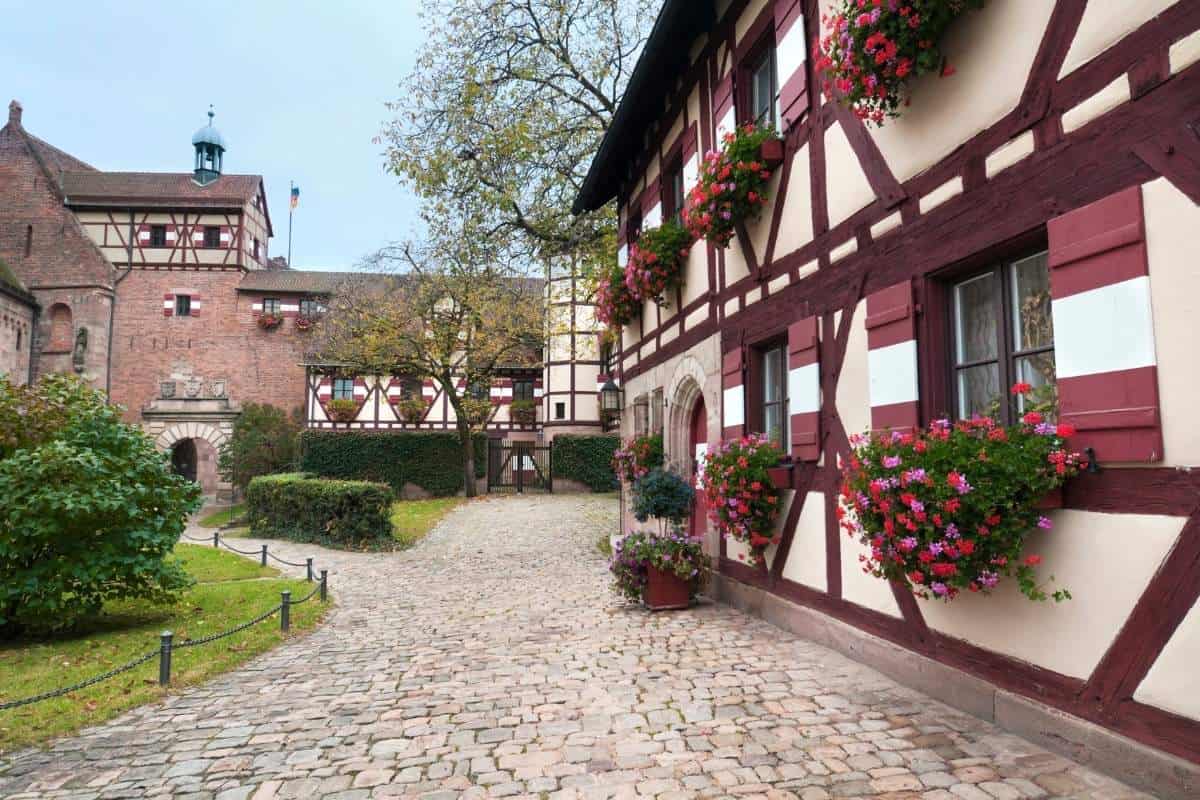
There is a lot to unpack but we’ve compiled 17 fascinating facts about Nuremberg Castle for your travel trivia enjoyment. Don’t forget to impress your friends with this newfound knowledge!
Know your stuff already about the Nuremberg Castle? Then jump right into the quiz. Otherwise keep reading and learn some fascinating facts.
17 Facts about Nuremberg Castle
History
~ Nuremberg Castle can be seen as three sections: the Imperial Castle, the former Burgraves’ Castle (which was destroyed in 1420), and the buildings erected by the Imperial City.
~ The first piece of the current Nuremberg Castle was built around 1200 AD, however, archaeological findings show that fortified buildings appear to have been erected at the site as early as 1000 AD. The Imperial Castle of Nuremberg grew around the Sinwell Tower as a visible stronghold of the Holy Roman Empire throughout the middle ages. The entire Imperial Castle complex was completed in the 16th century.
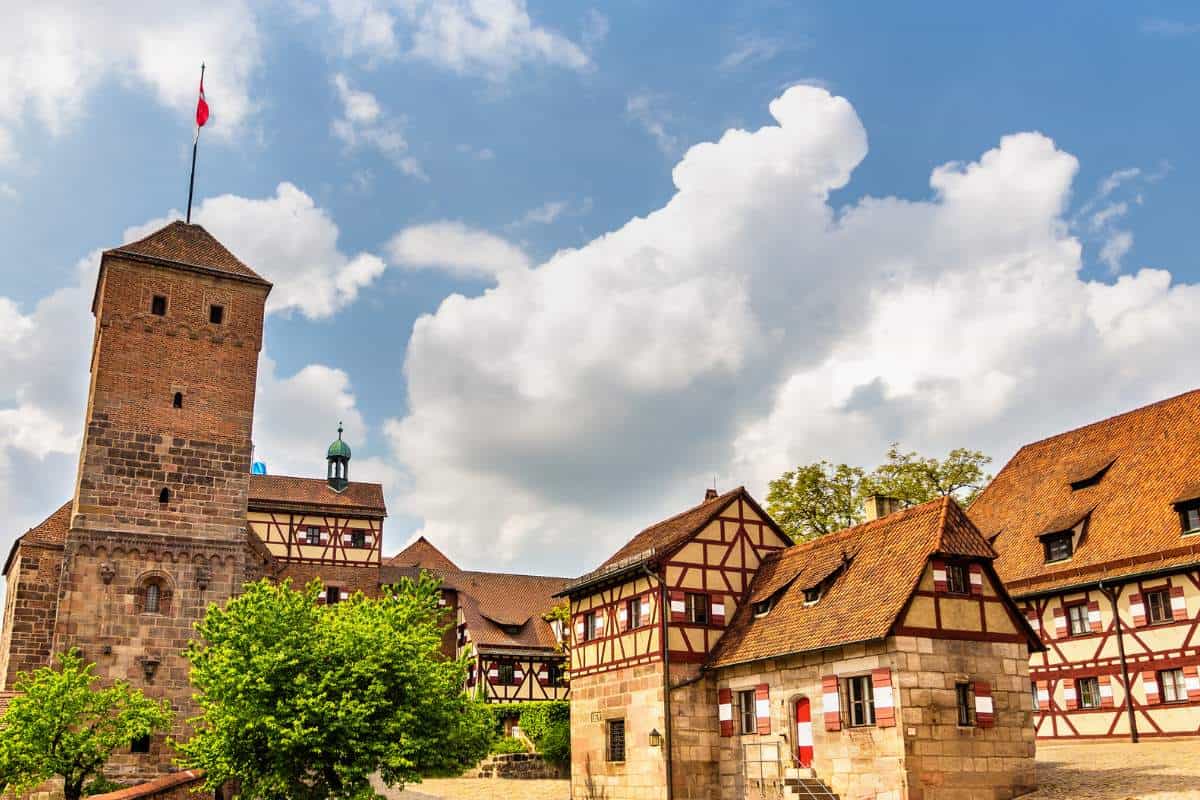
~ The Palas is the main building of the Imperial Castle and is divided into two floors. It was used for official functions and served as the Emperor’s residence (his royal apartment) when visiting. Throughout the castle’s history, it has been modified and rebuilt many times and now houses a permanent exhibition for the Imperial Castle Museum.
~ The Imperial Chapel was built at the same time as the original Palas. It is a Romanesque double chapel that consists of two chapels fashioned in a romantic neo-gothic interior, one above the other, and connected only through an opening in the ceiling. This structure is meant to symbolically represent the hierarchical levels in medieval society, made even more prominent with the feature of the emperor’s gallery on the upper chapel. This allowed him to look down upon the grounds and keep his distance from the rest of the court.
~ Nuremberg was the setting for numerous Imperial Diets over centuries. The Imperial Diet acted as a court assembly and acted as a deliberative body of the Holy Roman Empire (a mostly German nation). Having no authority above them besides the Holy Roman Emperor, the Imperial Diet negotiated topics relevant to the empire and also voted on who should be in power. It was the action of the “Golden Bull” decree issued by the Imperial Diet of Nuremberg and headed by Charles IV in the late middle ages that named Nuremberg as the place where every newly elected ruler had to hold his first Imperial Diet, among other important aspects of the constitutional structure of the Holy Roman Empire. It was named the Golden Bull because of the golden seal it carried.
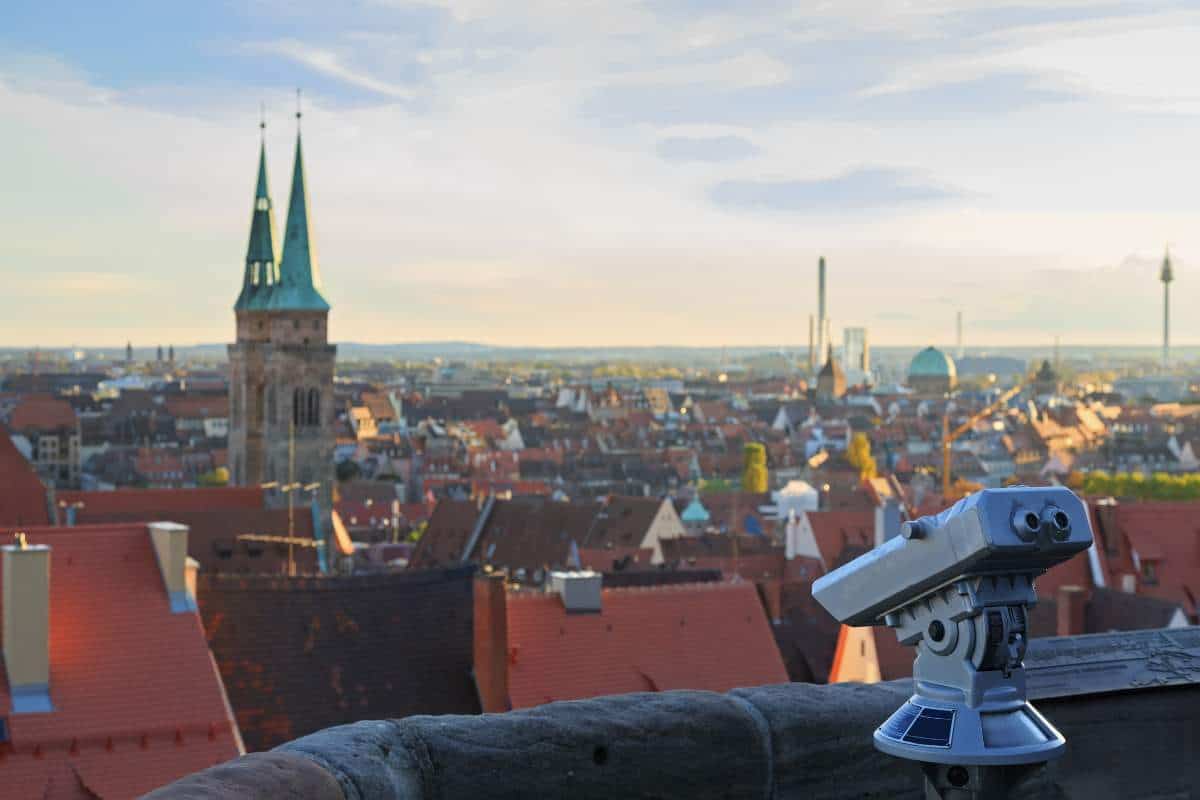
~ It wasn’t until Emperor Charles V that the tradition of emperors holding their first Imperial Diet in Nuremberg broke. There were mass epidemics happening inside the city walls at the time so he relocated his first Imperial Diet to Worms, Germany and did not visit Nuremberg until 1541, on his way to the Regensburg Diet.
~ The Deep Well sits in the middle of the courtyard within the Imperial castle complex and the easy source of water came in handy in times of duress and siege. The shaft reaches a depth of 164 feet and the water is usually 10 feet deep. The Deep Well provided sufficient quantities of water for normal consumption, but during Imperial Diets and visits by the Emperor, water barrels had to be transported in on wagons. Now as part of the Imperial Castle Museum, visiting the Deep Well is only accessible while on a guided tour (which is included in the entrance fee).
~ The Imperial City of Nuremberg was a prominently Protestant city that identified as a free imperial city or independent imperial city-state within the Holy Roman Empire. As a sign of trust, the city acquired the royal property of the imperial regalia in 1423 and the historical context is important. Just because Nuremberg was home to an important imperial castle that built Nuremberg up as an imperial destination, doesn’t mean that the city could keep its importance as things shifted over time.
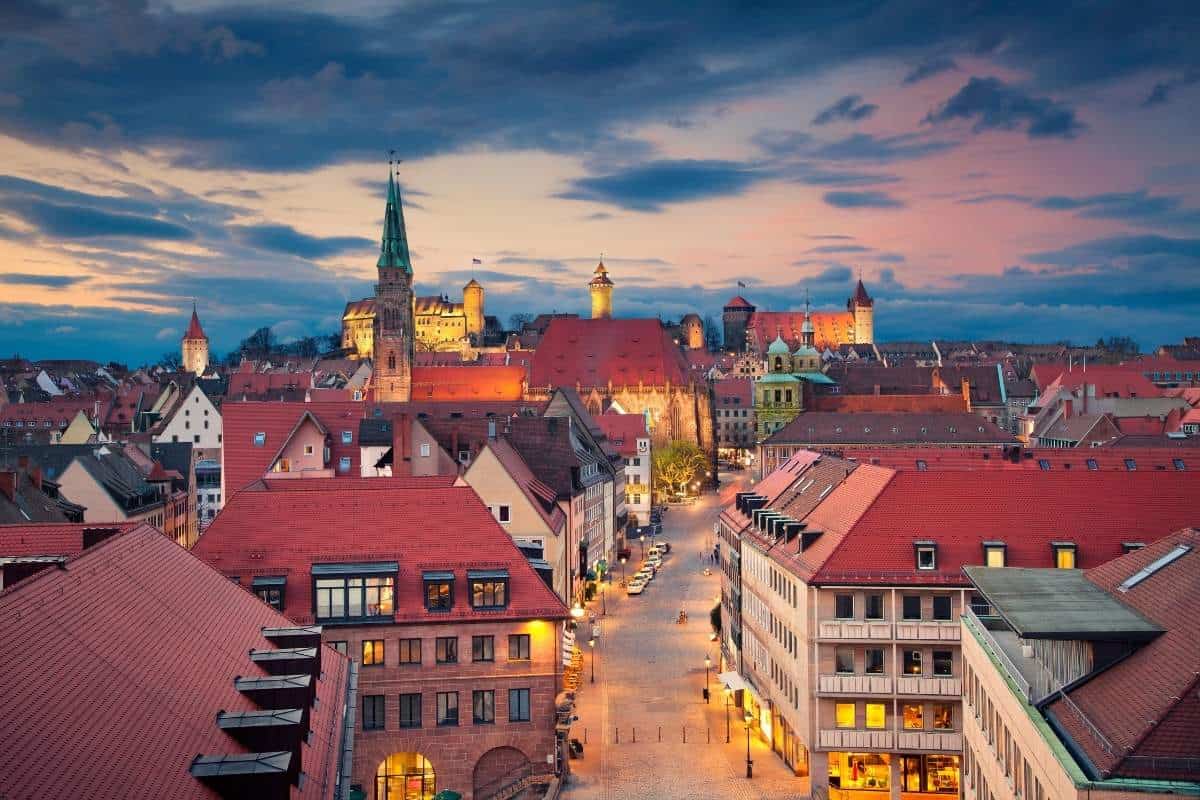
~ For over 500 years of its history, the castle was home to every emperor of the Holy Roman Empire. It served not only as a prestigious residence but as an integral part of the empire’s administrative functions as for a time both the courts and the Imperial Diets met at Nuremberg Castle. In the Middle Ages, German kings (or Holy Roman Emperors after their coronation by the Pope) did not have a capital but traveled from one castle to the next. Thus, the castle at Nuremberg became an important imperial property and spanning into the late medieval centuries, most kings and emperors stayed at the castle at least once.
~ The castle lost its importance after the Thirty Years’ War (1618 – 1648) but before then it was often looked over for emperors to stay at in favor of the accommodations at patrician houses (nobility). Seeing the town hall completed within the city centre in 1340 also showed a movement away from the castle as a significant show of power for the emperors as this is where they started to execute their governmental acts. The subtle shift over time can be seen as a religious movement as the Protestant city sat at odds with the Catholic emperors that were anointed by the Pope.
Nuremberg Castle During World War II
~ The Imperial Crown for the Holy Roman Empire was made in 962 and during the second World War, the crown was placed in an underground vault in Germany for safekeeping. The vault was located at Nuremberg Castle to be exact and the American military recovered it along with other treasures in August 1945 when the war was over.
~ The Imperial Hall was primarily used for festivities when the Emperor was visiting Nuremberg Castle. Unfortunately, the Imperial Hall suffered significant damage in World War II and needed to be rebuilt. It now stands as an exhibit showcasing how the Holy Roman Empire functioned.
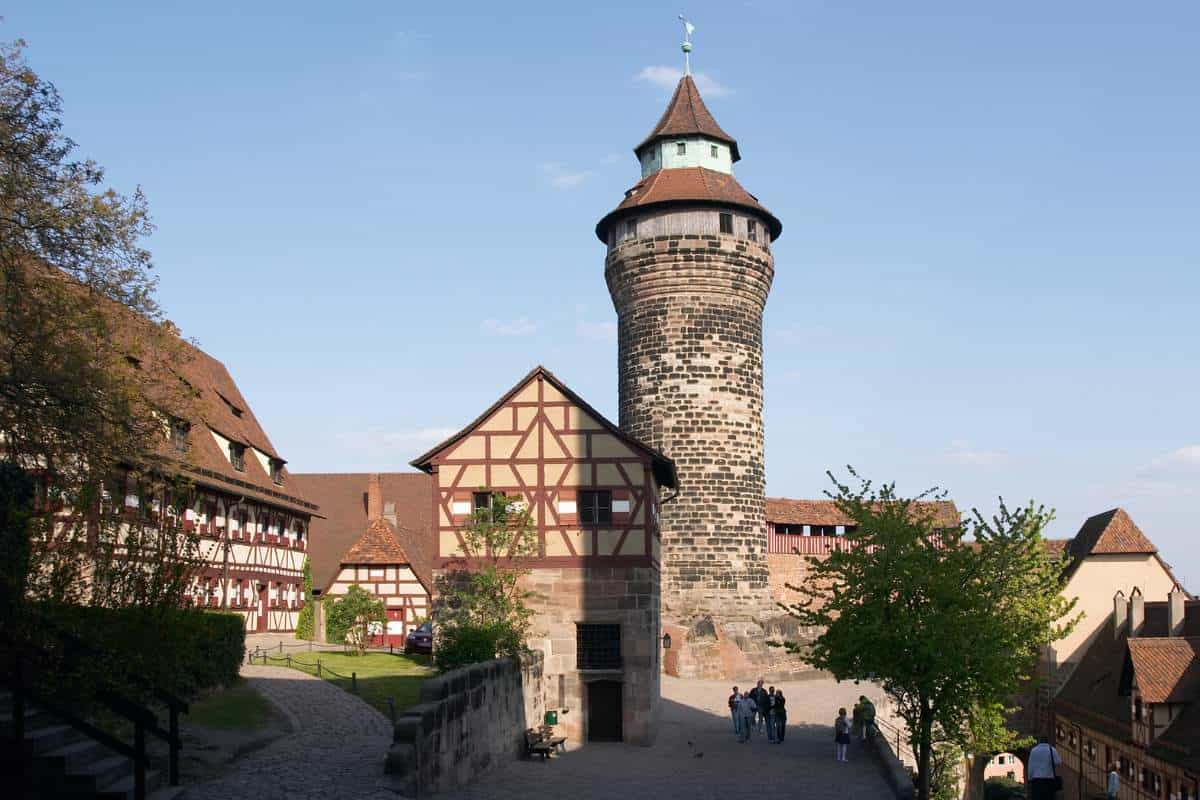
~ Sinwell Tower at Nuremberg Castle was named after its form, as “sinwell” in Middle High German loosely translates to “extremely round”. It is thought that the tower was initially meant to be used as a treasury or a prison, but Sinwell Tower ended up serving as a keep – a last refuge to run to in case the castle fell to enemies. Actually, in spite of its elevated and exposed position, Sinwell Tower was one of the few castle buildings to survive the bombing of Nuremberg during World War II.
~ Nuremberg Castle was restored by the Nazis in 1936 for the Nuremberg Party Rally, however by 1945 during World War II, most of the castle was destroyed. In fact, the romanesque Imperial Chapel or Double Chapel was somehow missed in these attacks, coming out relatively unscathed compared to other parts of the complex.
Current Times
~ One of the largest and most modern youth hostels in Germany is located in the former Imperial Stables at Nuremberg Castle.
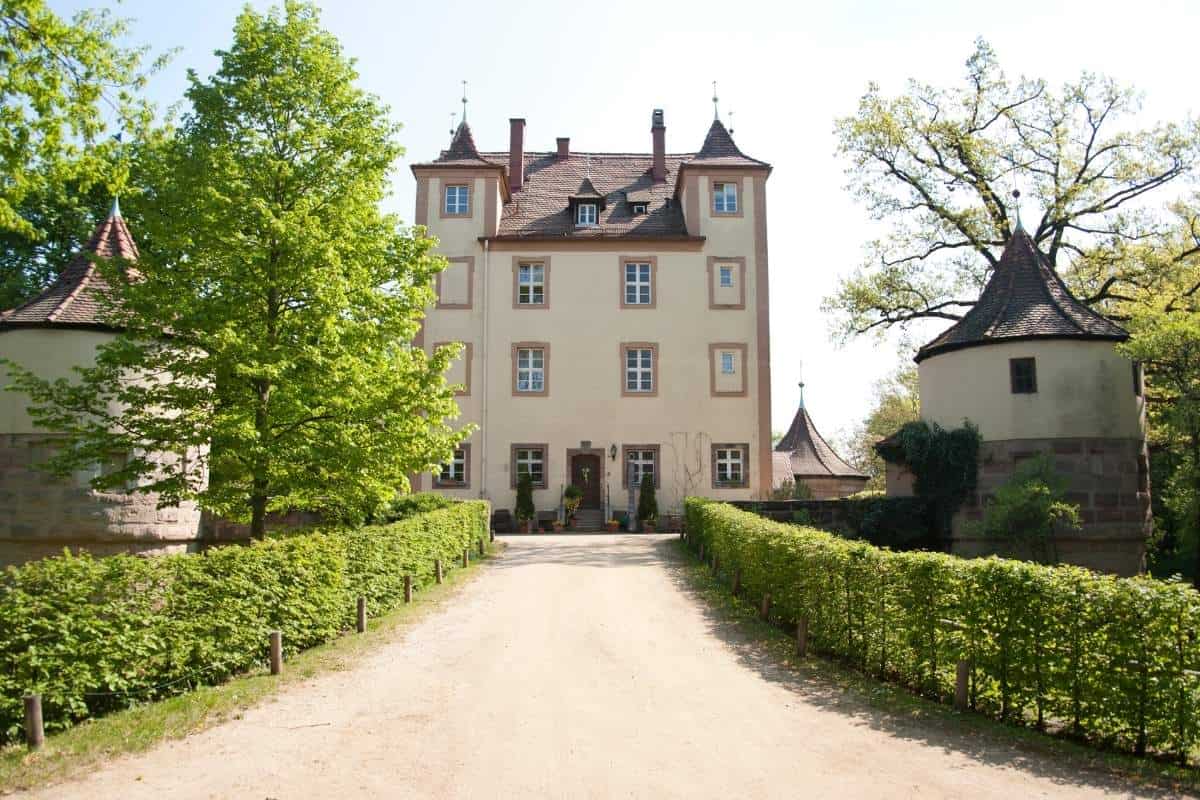
~ The Imperial Castle Museum is integral in displaying medieval armor and weaponry with pieces from the collection ranging from the 12th to the 19th centuries. The Imperial Castle Museum is located within the Imperial Castle and holds one of Germany’s most important collections of historical weapons.
~ The Imperial Castle is recorded as having a number of different castle gardens during its many centuries of history, none of which have been preserved. All of the other Nuremberg Castle gardens may not have survived, however, the current castle garden (Maria Sibylla Merian Garden), is named after a famous artist and naturalist who lived and worked in Nuremberg during the 18th century. Because of the vulnerability of the lawn, the garden is only open to the public two days a week.
Visiting Nuremberg Castle
If in the area, seeing the extensive castle complex is a must-do! (It’s not every day you get to walk the hallways that emperors walked during the Middle Ages).
As of 2023, Nuremberg Castle opening hours and admission prices are as follows:
- April to October: daily 9 am-6 pm
- October to March: daily 10 am-4 pm
- Nuremberg Castle Combination Ticket – €7
- (Palas with Double Chapel / Castle Museum + Deep Well + Sinwell Tower)
- Palas with Double Chapel + Castle Museum – €5.50
- Deep Well + Sinwell Tower – €3.50
- Maria Sibylla Merian Garden – Free
- Those under 18 are free.
Now that you’ve read some facts about Nuremberg Castle, get ready to take the quiz! Click the button below to test your knowledge.
[adinserter name=”Block 1″]





